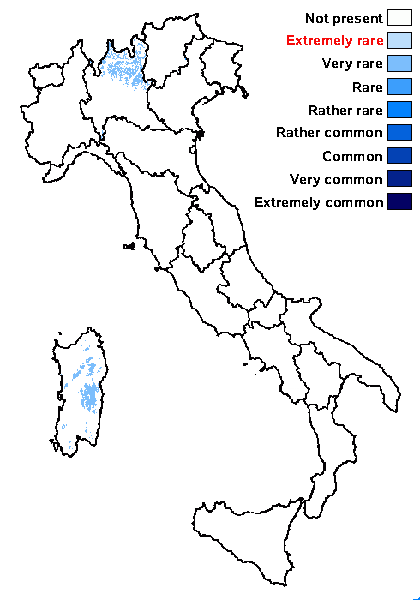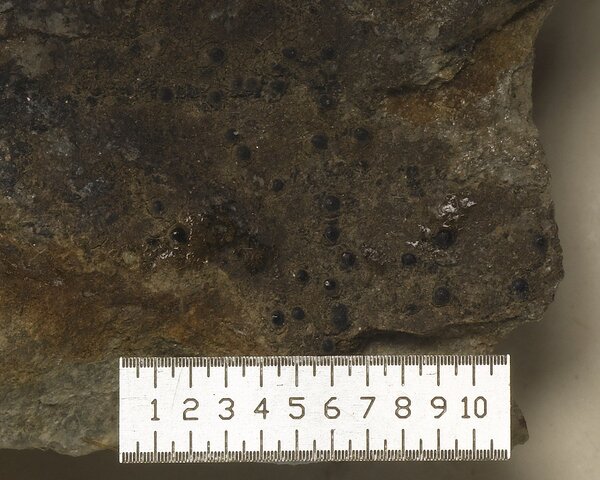Verrucaria anziana Garov.
Tentam. Dispos. Lich. Langob.: 20, 1865.
Synonyms:
Distribution: N - Lomb. C - Sar (B-24002 det. H. Sipman).
Description: Thallus crustose, episubstratic, pale grey-brown to medium brown, not gelatinous when wet, 60-480 μm thick, smooth, matt to slightly glossy, usually cracked. Cortex brownish, weakly developed; thallus cells not or only weakly arranged in columns; medulla without a black basal layer. Perithecia black, 0.2-0.4 mm across, immersed, the apex sometimes slightly projecting. Involucrellum absent or very poorly developed around the ostiole, poorly evident, not spreading; exciple brown throughout or colourless in lower part; hamathecium of periphyses and periphysoids, interascal filaments absent; hymenial gel hemiamyloid, I+ red (I+ blue at very low concentrations of I), K/I+ blue. Asci 8-spored, clavate, I-, fissitunicate, the wall thickened above, with an ocular chamber, dehiscent by extrusion of an endotunica to form a delicate rostrum, Verrucaria-type. Ascospores 1-celled, hyaline, ellipsoid, (23-)25-31(-36.5) x (10.5-)11.5-13(-14.5) μm, often with a 0.8–2.5 μm thick, gelatinous perispore. Photobiont chlorococcoid. Spot tests: K-, C-, KC-, P-, UV-. Chemistry: without lichen substances.Note: this species was often considered as a synonym of V. latebrosa, but according to Orange (2008, 2013) it differs in several important characters, although Thüs (in litt.) questions this assumption, since no evidence for a reliable correspondence between morphology, and ITS gene tree has been published yet. It usually grows on siliceous rocks by streams, rivers and lakes, and is known from both the Alps and Scandinavia.
Growth form: Crustose
Substrata: rocks
Photobiont: green algae other than Trentepohlia
Reproductive strategy: mainly sexual
Poorly known taxon in need of further study
Commonnes-rarity: (info)
Alpine belt: absent
Subalpine belt: very rare
Oromediterranean belt: absent
Montane belt: very rare
Submediterranean belt: absent
Padanian area: absent
Humid submediterranean belt: absent
Humid mediterranean belt: absent
Dry mediterranean belt: absent

Predictive model
Herbarium samples
Growth form: Crustose
Substrata: rocks
Photobiont: green algae other than Trentepohlia
Reproductive strategy: mainly sexual
Poorly known taxon in need of further study
Commonnes-rarity: (info)
Alpine belt: absent
Subalpine belt: very rare
Oromediterranean belt: absent
Montane belt: very rare
Submediterranean belt: absent
Padanian area: absent
Humid submediterranean belt: absent
Humid mediterranean belt: absent
Dry mediterranean belt: absent

Predictive model
| Herbarium samples |
 Index Fungorum
Index Fungorum
 GBIF
GBIF


